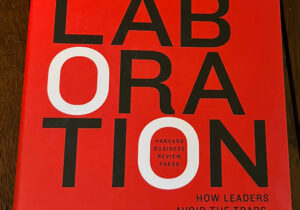The Importance of Patching the Leaks in the STEM Pipeline
The commentary that was published in Cell was inspired by Drs. Beronda Montgomery, Marcus Lambert, David Asai, Sandra Murray, and Kenneth Gibbs, who have led the discussion of how minority participation in STEM fields has to grow in order to fix “leaks” in the academic pipeline. I realized that to help retain Persons Excluded because of their Ethnicity or Race (PEERs)1 and women in science, we must mitigate the negative experiences these groups face while they journey through the pipeline; if serious enough, these adverse incidents can shape the outcome of young professionals’ careers before they truly begin2. It is therefore necessary to have conversations that aim to mitigate these negative experiences to create a more diverse workforce. In this respect, I think it is helpful for scientists to see science as one body working together to understand the undiscovered. Knowledge, data, and facts are what we should care about—not race, ethnicity, or gender.
When it comes to preventing poor interactions with mentors and colleagues, the sooner the better. By combating negative experiences early on, we can prevent minorities from prematurely exiting the STEM pipeline. However, this is easier said than done; scientists may want to think about some additional steps that could repair the “leaks.” For example, encouraging students to seek out multiple mentors who will offer differing opinions on topics of interest. Indeed, this could reduce the number of negative experiences a student has, since one positive interaction could theoretically cancel out a harmful one. Another step that can be taken is acknowledging the implicit biases and lack of cultural competence that exist in science. By addressing these issues, mentors can have more effective conversations about how to bolster a minority mentee’s progress. Data collection is important to optimize scientific engagement as well3; quantifying individuals’ success and showcasing it to others helps support retention efforts just as much as cultivating positive collegial interactions. Some institutions have created successful diversity programs which incorporate such strategies, like the Meyerhoff Program at the University of Maryland, Baltimore County or the Biology Scholars Program at the University of California, Berkeley4. We must continue to expand upon these existing efforts and incorporate them at other institutions; diverse perspectives can only fortify ideas that lead to better “patches” over leaks in the academic pipeline.
While the Cell article covers some of the basics of mending the “leaks” in the academic pipeline, it is not a comprehensive guide to all of the steps the scientific community can take. For example, most of the emphasis on retention happens early in the pipeline, such as during undergraduate, graduate, and post-graduate educations, but there is still a need for support at later stages, like early-stage faculty-hood. One possible remedy to this problem is to create an annual summer training session for soon-to-be faculty members (e.g. postdocs, instructors, and research track professors) that focuses on essential skills like grant writing, mentoring, teaching, setting up a laboratory, and negotiating funding. Additionally, I believe “cluster hiring” is an effective way to help PEERs and women succeed in scientific careers. Cluster hiring PEER and female scientists allows them to have a sense of community early on in their faculty positions. Cluster hires also demonstrate that the institution is willing to help PEER and female scientists succeed. In that way, cluster hiring creates a more diverse environment that is full of respect and collaboration. Ultimately, I am confident that addressing these “leaks” and taking proactive steps to patch them can produce a more inclusive system that values each individual’s success.
References:
- Asai D. J. (2020). Race Matters. Cell, 181(4), 754–757. https://doi.org/10.1016/j.cell.2020.03.044
- Brazziel M, Brazziel W. Factors in decisions of underrepresented minorities to forego science andengineering doctoral study: A pilot study. Journal of Science Education and Technology. 2001;10(3):273–281.
- Asai D. J. (2011). Measuring student development. Science (New York, N.Y.), 332(6032), 895. https://doi.org/10.1126/science.1207680
- Koenig R. (2009). U.S. higher education. Minority retention rates in science are sore spot for most universities. Science (New York, N.Y.), 324(5933), 1386–1387. https://doi.org/10.1126/science.324_1386a
Additional Resources
How Journals Can Increase Equity, Diversity and Inclusion in Science
NIH Offers New Type of K99/R00
Why I Wrote “Mentoring Minority Trainees”







0 Comments